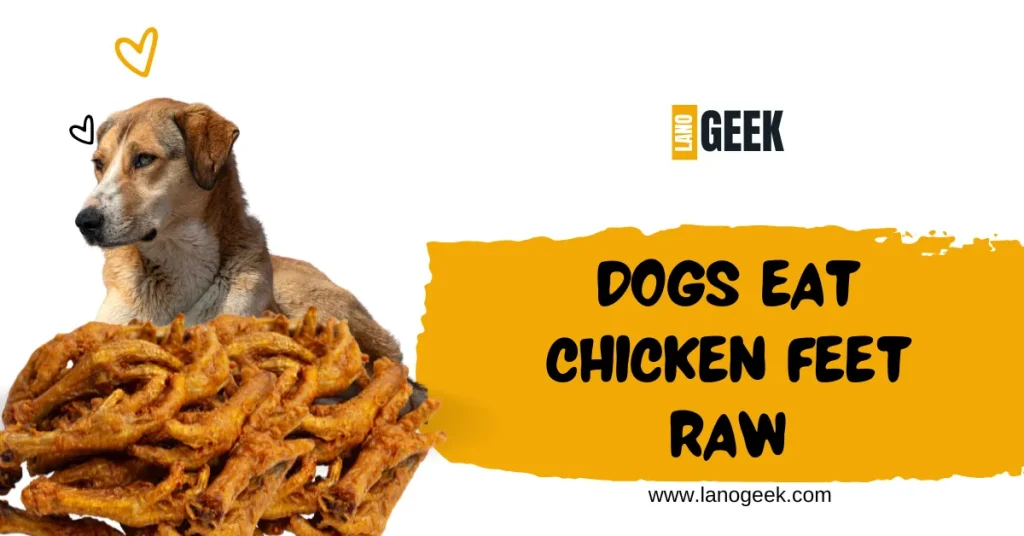As a dog owner, ensuring your furry friend’s diet is both nutritious and safe is a top priority. With the rising popularity of raw diets, many pet parents are curious about the benefits and risks of feeding raw chicken feet to their dogs. Not only are chicken feet crunchy and satisfying for dogs to chew, but they also come packed with glucosamine and chondroitin, which are great for joint health. However, the potential for bacterial contamination like Salmonella, Campylobacter, and Listeria makes some owners hesitant. In this comprehensive guide, Lets delve into the pros and cons of feeding your dog raw chicken feet, explore safe feeding practices, and offer alternatives for those who prefer other options. Let’s ensure your dog’s diet is balanced and healthy while satisfying their natural chewing instincts. Read on to discover if raw chicken feet are the right treat for your canine companion.
Proof Read: Can Dogs Eat Hooves
General Safety Of Raw Chicken
- Dogs Can Eat Raw Chicken: Yes, dogs can eat raw chicken, including small dogs. Their digestive systems are biologically designed to handle raw meat efficiently. With highly acidic stomachs and short digestive tracts, healthy dogs can process raw chicken without getting sick. This capability stems from their evolutionary history as carnivores.
- Raw Chicken Alone is Not a Complete Diet: However, it’s important to note that raw chicken alone does not provide a balanced diet. Dogs require a mix of muscle meat, organ meat, and bone to ensure they receive all the essential nutrients. A complete raw diet should include a variety of proteins and additional components to meet all dietary needs.
- Biologically Designed to Process Raw Meat: Dogs’ digestive systems are equipped to handle raw meat due to their highly acidic stomachs, which help neutralize harmful bacteria. Additionally, their short digestive tracts reduce the time that pathogens have to cause problems. This biological design allows them to safely enjoy raw chicken as part of their diet.
Nutritional And Health Benefits
Part Of A Varied Protein Diet: Incorporating raw chicken into your dog’s diet can be beneficial when it is part of a varied protein diet. Different protein sources contribute to a more balanced and well-rounded nutrition profile, preventing nutrient deficiencies and keeping your dog excited about their meals.
Rich In Glucosamine And Chondroitin: Chicken feet are particularly rich in glucosamine and chondroitin, which are crucial for maintaining joint health. These compounds are especially beneficial for older dogs, helping to alleviate joint pain and improve mobility.
Dental Health Benefits: Chewing on raw chicken feet can also promote dental health. The crunchy texture helps to clean teeth and massage gums, reducing tartar buildup and promoting overall oral hygiene. This natural chewing activity is not only beneficial for dental health but also provides mental stimulation and satisfies your dog’s instinctive chewing behavior.
Risks Of Raw Chicken
- Potential Bacterial Contamination: One of the primary risks associated with feeding raw chicken to dogs is the potential for bacterial contamination. Raw chicken, including chicken feet, can harbor harmful bacteria such as Salmonella, Campylobacter, and Listeria. These bacteria can pose serious health risks to both dogs and humans, especially if proper handling and hygiene practices are not followed.
- Studies on Contamination Rates: Several studies have demonstrated significant contamination rates in raw meat-based diets. For example, Salmonella has been found in 20-48% of tested samples. These findings highlight the importance of being aware of the risks associated with feeding raw chicken and taking appropriate precautions to minimize exposure to harmful bacteria.
- Caution During Handling: Handling raw chicken requires caution to prevent bacterial contamination. This includes properly storing and refrigerating raw chicken, using separate cutting boards and utensils for raw meat, and thoroughly washing hands and surfaces after handling raw chicken. By practicing good hygiene habits, you can reduce the risk of bacterial contamination and help keep your dog and family safe.
Adjusting To A Raw Diet
Initial Digestive Adjustments: When transitioning from a kibble-based diet to a raw diet that includes chicken, some dogs may experience loose stools initially. This is a normal part of the adjustment process as their digestive systems adapt to the new diet. The change in diet can lead to temporary gastrointestinal upset as the dog’s body eliminates fillers and toxins from their previous diet.
Detoxification Process: Loose stools during the transition to a raw diet should not be cause for alarm. Instead, they indicate that the dog’s body is undergoing a detoxification process, getting rid of substances that are not beneficial to their health. With time, most dogs adjust to the new diet, and their digestive systems stabilize.
Monitoring And Patience: It’s essential to monitor your dog’s digestive health during the transition period and provide support as needed. This may include adjusting the amount or type of food offered or incorporating digestive supplements to ease the transition. With patience and careful monitoring, most dogs can successfully adjust to a raw diet that includes raw chicken without experiencing significant digestive issues.
Conclusion
In conclusion, while raw chicken feet can be a valuable addition to your dog’s diet, it’s essential to approach feeding practices with caution and consideration for your dog’s safety and health. With proper handling, supervision, and veterinary guidance, you can provide your dog with a diet that supports their overall health and happiness.






